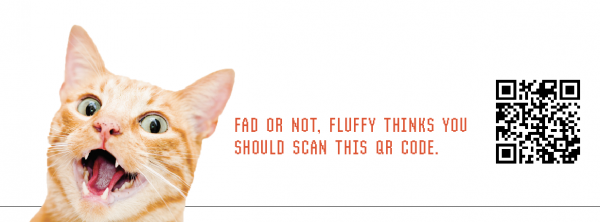December 27th, 2017
Right vs. Wrong
How to Avoid the Right Answers to the Wrong Questions
The internationally acclaimed venture capitalist, businessman, philanthropist, songwriter and musician, Bono, once famously lamented, “We thought we had the answers, it was the questions we had wrong!”
Every business strives to decode what their customers and potential customers want and how best to engage them. The challenge is to go beyond what they say to uncover what they really mean. And achieving that deep and nuanced understanding of the people we seek to influence begins by asking the right questions.
Most research – both quantitative and qualitative – employs direct questions. Such questions may lead to answers that are technically correct yet fail to provide the needed context to explain what shapes opinions or motivates behavior. Even more concerning, direct questions often lead to inaccurate or misleading responses.
Take for example last year’s Republican presidential primary campaign. Donald Trump consistently beat poll numbers in a number of states including Connecticut, Rhode Island, Maryland, Pennsylvania and Indiana by anywhere from 5 to 11 points. The disparity was attributed to the fact that some voters, when asked a direct question, simply didn’t want to admit they were supporting him.
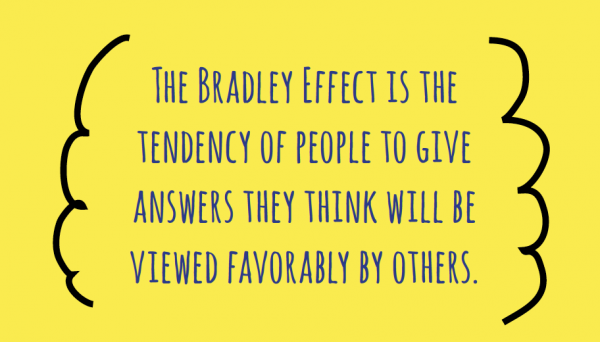 There is a classic theory called The Bradley Effect that explains this phenomenon. It’s the tendency of people to give answers they think will be viewed favorably by others. It dates back to when Tom Bradley who was mayor of Los Angeles ran to become the first African American governor of California in 1982. He was leading in all the polls but he lost. And political scientists speculated that many voters said they supported him because it felt like the politically correct response when in fact they were not actually comfortable voting for him.
There is a classic theory called The Bradley Effect that explains this phenomenon. It’s the tendency of people to give answers they think will be viewed favorably by others. It dates back to when Tom Bradley who was mayor of Los Angeles ran to become the first African American governor of California in 1982. He was leading in all the polls but he lost. And political scientists speculated that many voters said they supported him because it felt like the politically correct response when in fact they were not actually comfortable voting for him.

Too often a reliance on traditional research methodologies delivers predictable answers rather than critical insights. That’s because they employ direct questions that enable customers to couch their answers. Often answers to direct questions are either deliberately or subconsciously misleading because respondents:
- Give answers to make themselves look good or appear smart.
- Want to be seen as politically correct.
- Resist being candid about sensitive or potentially embarrassing topics.
- Aspire to be seen as helpful or to please the interviewer.
- Avoid candor that might jeopardize personal or professional relationships.
Circumventing these pitfalls requires going in through the back door with a disruptive approach that disarms those being interviewed by surprising them with provocative open-ended questions. When asked the unexpected, most individuals have no ready response, so their unplanned narratives are spontaneous and unfiltered. It leads to a conversation they hadn’t anticipated and, in the process, they unintentionally share the most authentic window into the emotional triggers that explain their actions.
Regardless of the sector in which you operate or the size of your organization, every business has issues. Taking a disruptive approach and going beyond what your customers say to uncover what they really mean will help you avoid the right answers to the wrong questions. And that’s the critical first step to crafting effective solutions.
About Linda Goodman
Linda Goodman, co-author of Why Customers Really Buy: Uncovering the Emotional Triggers that Drive Sales, is the principal of LG Associates, a research, marketing and strategy firm based in Connecticut. She is the nationally recognized pioneer of Emotional Trigger Research, a breakthrough methodology that combines in-depth one-on-one interviews with provocative open-ended questions to transcend what customers say to the far deeper level of what they really mean.
November 9th, 2017
Magic or Marketing? Or Both?
When it comes to marketing, here’s the mother of all questions: how do we know what we’re doing is working?
Yep. It’s a doozy. And a question not easily answered.
The nature of our business has changed over time, but at the end of the day, we are in a thankless job of driving awareness, education, engagement and sales. Even when we drive increases to revenue, we are still met with questions like, “How?” “Why?” and, ultimately, “How do we top that next time?”
We seem to have become the mystical creatures that wave wands and make things happen. And when it comes to whether or not our marketing plans are “working,” the burden of proof is solely on us.
So the big question for marketers now becomes: how do we answer the mother of all questions, “how do we know what we’re doing is working?”?
And that’s what we’re going to discuss in this issue of Thinking.
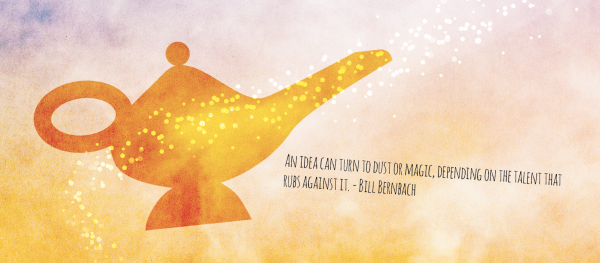
November 9th, 2017
The Myth of KPI

The campaign just launched. The TV spot is on the air, the billboard is up by the interstate and your digital ads are on everyone’s phone. You finally have a chance to breathe after weeks of sweating deadlines. Then your phone rings. It’s your boss. And she wants to know how the campaign is performing.
It should be an easy question to answer, right? We live in the age of data. Everything can be tracked, everything can be clicked and everyone with an internet connection can tell you how many times your message has been seen.
 But what the heck does that really mean? You talk to your agency, pull some early numbers and see that the campaign has served 2,438,976 impressions, generated 1,314 clicks and has 16 billboards, 12 print ads and a TV spot running everywhere. Great! That sounds good, right?
But what the heck does that really mean? You talk to your agency, pull some early numbers and see that the campaign has served 2,438,976 impressions, generated 1,314 clicks and has 16 billboards, 12 print ads and a TV spot running everywhere. Great! That sounds good, right?
It could be. But it also could be just what it sounds like: noise. There are sounds within that cacophony of numbers that you need to hear. But which ones? As a marketing professional, this is one of the hardest – yet most important – parts of your job.
In many ways, you as a marketing executive are like the general manager of a baseball team. You have dozens of players under your watch, each generating hundreds of statistics you can slice every which way. Yes, your right fielder had three hits. That’s good! But then you find out his three hits came over 30 games. That’s not good! And the team lost most of them. Even worse!
Judging a campaign’s success by a few pieces of raw numbers is like judging a baseball player’s worth solely based on hits. What stats are simply stats? Which ones generally lead to a team’s success? A good general manager knows what he or she is looking for. Just like a good marketing executive.
The bottom line: you can’t answer your boss’ big picture question with little picture data. You need information, but you don’t need every single data point. You need the right information that’s designed to help you understand your campaign’s performance.
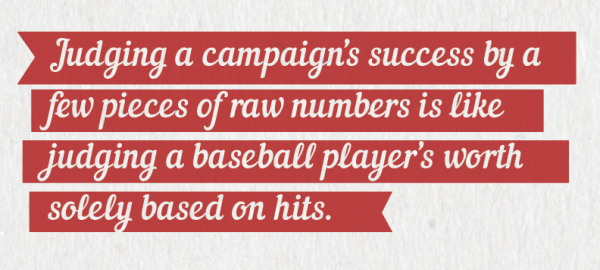
So how do you keep your focus on the right information? How do you answer your boss’ question without sounding unprepared? Two tips: have a plan and stick to it.
You know your business better than anyone. And you know that building a successful business can take longer than expected in our quick-answer world. If your campaign’s goal is to sell 100 cars in three months, you can’t say it’s successful after two days. You can say that you might be selling cars at a certain pace. Or that you have implemented all of your tactics and you’re eager to see how they work. But you just don’t know if it’s a success yet.
So take your time. One hit doesn’t mean a win, one strike out doesn’t mean a loss. Just like one metric won’t make a campaign. And one metric won’t ruin it, either.
November 9th, 2017
Broad vs. Narrow
Which is better: broader reach or narrow?
Narrow targeting is very important for direct response advertisers, small businesses trying to appeal to local customers, and for advertisers trying to get users to download a game app. But for many larger advertisers, narrow targeting can be counterproductive.
The more we search for attribution to ROI on our digital advertising, the more likely we are to narrow our audience to only people that are actively looking for our specific products or services. Makes logical sense, right?
Maybe not. While the tools at our disposal to hyper target are getting better and better, are we missing a big opportunity for future sales by targeting too narrowly? Maybe so. And because it costs more per person reached when we use narrow targeting, are we making the most of our money?
Take Facebook advertising for example. The ability to hyper target is amazing, but some case studies show that companies can receive a bigger sales increase if they reach a more significant portion of
a platform’s overall audience.
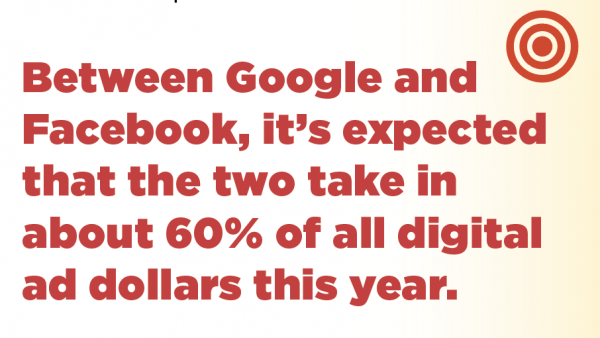
For instance, two years ago Procter & Gamble (P&G) tried narrowly targeting ads for its Febreze
air freshener at pet owners and households with large families. Seemed logical, but the brand found that sales stagnated during the effort. However, results rose when the campaign on Facebook and elsewhere was expanded to include anyone over 18.
We’ve also seen this pattern with some of our clients. There are times when buying very targeted, smaller audiences results in higher CPMs (cost per thousand impressions), but not much else. And these higher CPMs rank poorly in Media Mix Modeling—a method marketers use to attribute sales or other outcomes to different media investments.
That’s why P&G, the world’s biggest marketer, changed the way it buys advertising on Facebook. It is cutting its spend on highly targeted ads and is increasing spend on ads that address much larger swaths of the potential audiences for its brands. For P&G that also means increasing their TV spending.
Shifting to broader reach is worth considering for many brands that drive purchase in-store, or sell services across a wide spectrum.

For B2B and direct-response ads selling products, online measurement is typically clearer from impression to purchase, and more specific targeting, even though it is more expensive, generally makes sense. But even then, careful consideration is advised.
Last year, Gartner developed a B2B model around buyer readiness.Based on this model, even if you have a very well-defined target segment, you will likely have buyers in all these states of readiness. So if your advertising investments are targeted at only shoppers or buyers, you are missing an opportunity to move prospects along the sales cycle, and they may be harder to capture later. Whoever moves these prospects forward in readiness has a big say in their thinking. So dig into your target market. Determine where they are on the readiness spectrum. And then develop your marketing and sales strategy to address the segments with the most opportunity for you now and in the future.
November 9th, 2017
Testing, Testing, 1 2 3
How to take advantage of testing retail promotion effectiveness.
In this age of digital immediacy, promotional testing has become more of a science than ever before. And more of a necessity. Although the advent of digital media offers advertisers more media options with a wider range of pricing, an acceptable ROI relies on the fact that these dollars are spent most effectively. In this age of digital immediacy, promotional testing has become more of a science than ever before. And more of a necessity. Although the advent of digital media offers advertisers more media options with a wider range of pricing, an acceptable ROI relies on the fact that these dollars are spent most effectively.
One of the more common types of testing is geo-targeting, or push messages, transmitted through a mobile application. When customers enter the geographic area being targeted, the appropriate promotional offers will appear on their mobile devices. This can be a great tactic for retail locations.
Let’s take the quick service restaurant (QSR) industry for example.
With so many fast-casual choices, potential customers are often either not aware of or have forgotten about a specific location that is nearby. This kind of testing can ensure that the prospect is cognizant of the establishment when they’re in proximity.
In addition, when geo-targeting is employed during a variety of dayparts, it can determine when the audience in that particular location is most likely to avail itself of that particular fast casual establishment and that particular offer. It can also allow you to determine which promotions will bring home the sale in greatest volume.
Recently, we were approached by Pepperjax because their entrée into the Kansas City (KC) market was significantly underperforming. Site research found some obstacles in road visibility and a higher level of fast-casual-dining competition around many of their locations. It was also determined that the Pepperjax brand had low levels of awareness in the KC market overall. We needed to boost awareness, as well as activate trial.
Before rolling out a major campaign in the KC market, we recommended a test campaign to see how much impact highly targeted offers would have on sales during both lunch and dinner, as well as identify which promotion would yield the highest ROI.
Once we identified our test store and mapped the locations of the control stores, we set up a five-mile geo-fence around the test location and began to push our test promotions out to consumers’ mobile devices. We did this during dayparts when they were making lunch and dinner decisions through mobile marketing (10 a.m. to 2 p.m. and 4 p.m. to 8 p.m.).
We set specific goals based on customer lifetime value, client history and industry averages. Ads were served to the target on social media sites, in mobile apps and on mobile websites. The ad clicked through to a mobile coupon, which could then be shown to the cashier and redeemed on a special scanner at the retail location.
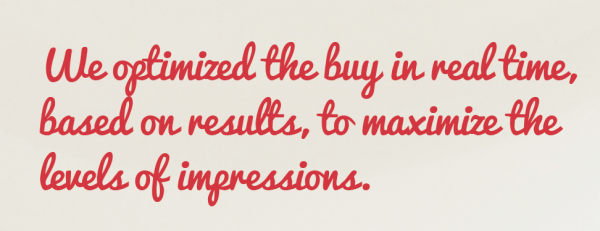 We optimized the buy in real time, based on results, to maximize the levels of impressions. If the offer was not performing well at lunch, we had the ability to change it rapidly and test another offer for dinner.
We optimized the buy in real time, based on results, to maximize the levels of impressions. If the offer was not performing well at lunch, we had the ability to change it rapidly and test another offer for dinner.
 The testing proved invaluable in enabling us to determine the most efficient rollout plan possible.
The testing proved invaluable in enabling us to determine the most efficient rollout plan possible.
- Our top performing offer had a 19 percent redemption rate, which was well above our goal.
- Our cost-per-redemption was less than a third of our allowable goal, generating an ROI of 263 percent and outperforming industry standards by 450 percent.
- On coupon conversion, we outperformed the industry standard by 3 to 1.
As pleased as all parties were with the results of our test and our ability to rollout a campaign that promised to be highly effective, we were cognizant that our results could just as easily have gone in precisely the other direction. As disappointing as that would have been, it would have enabled us to course correct and save us from spending a ton of money on a campaign that would certainly have underperformed. And that, in a nutshell, is the beauty of testing.

November 9th, 2017
Brand Truly Matters

We all want to believe it: the widget that we make and market to the world is the best out there. Heck, it’s so superior, it practically sells itself, right? Well, problem is, for every one of our widgets, there are many others vying for a space in the hearts and minds of our customers, and, in many cases, their widget is just as good, if not better.
This is where brand truly matters.
Before we go any further, I want to level the playing field. You see, brand is a complicated term with many variances in the definition. And over the years, a brand has grown to encompass much more than logos, fonts and colors. And while those things are a part of your brand, they’re just a small piece of a much bigger puzzle. Think of it this way, your brand is the thing that’s left in the back of people’s minds when you’re not there. It’s the feelings, memories and stories that stick with them. It’s the emotions that they recall when seeing your logos, fonts, colors and communications in the wild.
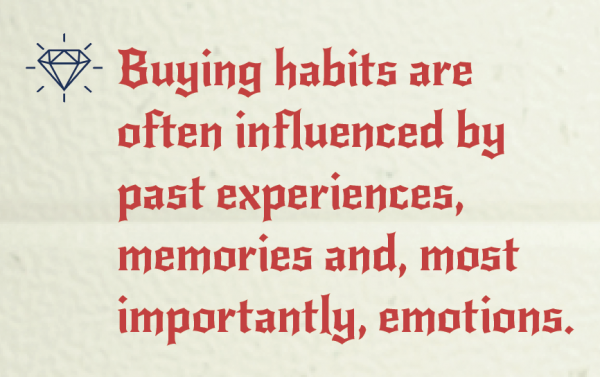 So why does that matter? Well, buying habits are often influenced by past experiences, memories and, most importantly, emotions. When two widgets on level ground are competing for that coveted spot in the shopping cart, it’s the customer’s ability to recall and relate with a brand that tends to win them over. As an example, here are three ways that brands, through emotional experiences, have won fanboy status from me, the customer.
So why does that matter? Well, buying habits are often influenced by past experiences, memories and, most importantly, emotions. When two widgets on level ground are competing for that coveted spot in the shopping cart, it’s the customer’s ability to recall and relate with a brand that tends to win them over. As an example, here are three ways that brands, through emotional experiences, have won fanboy status from me, the customer.
Differentiation
In a sea of sameness, a good brand can help differentiate itself from competitors. For me, Southwest has done a great job. If given the option between a flying cattle car, and a flying cattle car with no baggage fees and a smile, I’ll always choose the latter. Admittedly, their way of doing things is not for everyone, but their lighthearted approach to air travel has found a place in my heart and I always choose them first.
Loyalty
I fell in love with Apple back in 1997 when Steve Jobs came back into the picture and started making big decisions that made sense to me and my life. I wanted fewer choices, higher quality, and simplicity in the products that I buy. Ironically, here we are in 2017 and Apple now has 8 different (not including color choices) iPhone offerings to choose from. On top of that, they’re more complicated than ever. Yet, I still shop Apple almost exclusively. I can’t define loyalty any better than that.
A WORD OF WARNING … loyalty doesn’t last forever. If a brand continues to stray from their beliefs and values for too long, customers will stray from the products and brand. I’m looking at you, Apple.
Advocacy
It’s been said that comp anies make products and consumers make the brand. Case-in-point, if you can get your customers to talk about you in a positive light and sell your goods for you, then you probably have a strong brand. For me, it’s Jeep. Sure, it’s likely that any other SUV could take me on my little outdoor adventures, but Jeep was the one that got me there first. And while I’m not the most active social network user, there’s plenty of free advertising and good publicity for Jeep on my Instagram feed.
anies make products and consumers make the brand. Case-in-point, if you can get your customers to talk about you in a positive light and sell your goods for you, then you probably have a strong brand. For me, it’s Jeep. Sure, it’s likely that any other SUV could take me on my little outdoor adventures, but Jeep was the one that got me there first. And while I’m not the most active social network user, there’s plenty of free advertising and good publicity for Jeep on my Instagram feed.
There are three simple examples of how brands have wormed their way into the back of my brain. In each example, there are competitive products that do the exact same thing, but ultimately, these are the brands that speak and act most authentically to me. If your branding is strong, the next time your customer is faced with purchasing a product you offer, you can bank on the fact that they’ve built a strong enough connection with your brand. Then, ultimately, your products practically sell themselves.
November 9th, 2017
Mind Your Business
 Understanding a business and industry is paramount in driving real results.
Understanding a business and industry is paramount in driving real results.
Marketing plays an integral role in building, maintaining and growing businesses, but it is not the end all be all. It is the engine. In order to begin building a business case, we must understand business goals and how marketing strategy and goals move the needle to achieve business success. In order for all the marketing science to work, we must develop marketing goals that ladder up to overall business goals.
Here are five tips on creating business goals that make marketing goals useful.
Vision
Athletes teach us the art of visualization. It’s the idea that you visualize a goal and then commit to the actions necessary to make it come true. Good business goals are rooted in a vision and mission. Know who you are and what you want to accomplish as a whole, then detail marketing goals to drive
the impact.
Quantify
It is not enough to just be rooted in our why, but also the actual how. We can’t hold ourselves accountable if we don’t take ownership of the numbers. It is scary to put numbers to our goals; what if we miss them? Good, then we know we have to make changes. If we set the bar low, we won’t make a difference, we will make excuses. If we set them high and make all strategic decisions to achieve it, we will have business rationale.
Communicate
That offsite planning meeting among executives is great, but communication is key. Together, a company can achieve more. Don’t just send an email; follow through in everyday meetings and with each tactic developed. Constant and consistent prioritization with each interaction reinforces commitment.

Align
Listen more than you talk. Other departments and divisions are experts in their areas. They will have valuable insights and ideas, but we have to listen and align. Marketing is more than promotion; it involves the product, pricing and distribution. These will all affect the success of promotions, and alignment is key.
Rinse and Repeat
Goals are not set-it-and-forget-it. Consumers change. Industries change. Heck, everything changes. And in the digital world, those changes happen at a relentless pace. You don’t want to miss an opportunity to adapt and change those goals in real time to ensure the business ebbs and flows with the market.
Setting solid marketing business goals isn’t enough. We must align the company as a whole to these goals so we are doing more than just getting leads in the door. We can rest assured the customer experience and retention are aligned so we aren’t filling a leaky bucket. When we all work together as a business, we can achieve greatness.
August 16th, 2017
No, the internet didn’t kill TV, but … oooh, what’s this shiny thing?
As an industry, advertising has always been guilty of chasing the shiny new object. Every new medium that comes along – print, radio, TV, the internet, social media. Immediately, pundits herald the new thing as the holy grail for marketing and announce the swan song of whatever came before. Video killed the radio star. Anybody remember Al Ries’ and Laura Ries’ book, “The Fall of Advertising and the Rise of PR”? And the internet will kill TV.
It’s time for a little common sense. While we should always be open to new technologies, as well as new, more efficient and engaging ways to connect brands with their buyers, let’s not lose sight of universal truths in marketing. Great ideas transcend their tactic.
This issue of Thinking will explore how some “old” ideas are still remarkably relevant today, and will be tomorrow and for many tomorrows to come.
After all, creativity isn’t just about creating something entirely new; it’s about repurposing what already exists and seeing it in new ways.

August 16th, 2017
So much has changed. Yet so little is different.
History’s first PR blunder did not have anything to do with a cell phone video. It didn’t involve an upset air passenger, an ornery security guard or a tone-deaf CEO. The world’s first PR screw-up certainly had nothing to do with an iPhone.
But it did have everything to do with an apple. Adam and Eve had one simple rule to follow: don’t eat it. Keep your hands off that shiny red fruit and you’ll be fine. But they failed. And their human offspring have been stuck with a bad reputation ever since.
But things have changed since that day in the Garden of Eden. Who knows, if Adam and Eve were around today, they might have posted a picture of their snack on Facebook or a clip on Instagram. And even if they tried to be quiet about submitting to temptation, there’s a good chance someone would have caught the act on camera and uploaded it
to Twitter.

Everything has changed since that day, except the basics. People still cheat. People still steal. And people still lie. You, as a public relations professional, have to accept that.
We know one thing: an employee of some company in some corner of the world will have another unpleasant incident in the near future. Hopefully, it won’t involve a customer being dragged down an airplane aisle, but surely it won’t be something to be proud of.
But you can only control so much. Know this: whatever happens these days, you can be sure that someone will take a video of it and a lot of people will see it.
So, as PR pros, how should we handle this unknown crisis? The answer is as old as Adam and Eve’s apple core: tell the truth.
No one caught George Washington chopping down that cherry tree. But if our first president was a kid playing with a hatchet today, he wouldn’t have had to tell his dad the truth. One of his friends would have posted the whole tree-chopping incident on Instagram.
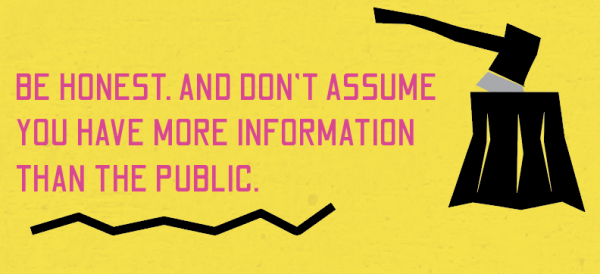 Be honest. And don’t assume you have more information than the public. Because chances are, you don’t. You only have one PR department. There are millions of cell phone cameras.
Be honest. And don’t assume you have more information than the public. Because chances are, you don’t. You only have one PR department. There are millions of cell phone cameras.
It’s as simple today as it was a thousand years ago. Acknowledge the facts. Take responsibility for your actions. And lay out what your organization will do to do better going forward.
After all, all of these high-tech cell phone cameras are held by humans. Humans who have made mistakes. So make sure those humans know your company is run by people, just like them. People who occasionally screw up. Admit it. Move on. And work to be better next time. You’re only human.
August 16th, 2017
The Deceiving Power of New
Sometimes we get so caught up in what we’re doing, we forget why we’re doing it. The tech industry is especially susceptible to this. And the best way to prove it is with an example.
Cue … the CueCat.
In 2000, the CueCat was released by Digital Convergence Corporation (which is no longer in business). The CueCat was a barcode reader – of course shaped like a household feline – that connected to your desktop computer. Users of the product were supposed to use it to scan specially formatted barcodes that would direct them to specific webpages.
In the beginning, the CueCat took off. Marketers went nuts for it. Barcodes started appearing in many newspapers and magazines, in publications as notable as Wired and Forbes. Radio Shack invested $30 million in the idea and had CueCat codes on all its flyers. The Coca-Cola Company was on board, as well, and started printing the barcodes on all of its cans and bottles of soda.

Well, despite its initial popularity, the device was unanimously heralded as a complete failure. The $185-million investment was reportedly “a massive flop” and a “fiasco.” Aptly summed up by Jeff Salkowski, then writing for the Chicago Tribune: “You have to wonder about a business plan based on the notion that people want to interact with a soda can.”
That was 17 years ago. 12 years later, we apparently decided it was a good idea to give the whole thing a go again.
Enter … QR codes.
Despite actually being created two decades before the CueCat, the technology behind the QR code started to draw the eye of U.S. marketers in 2012. And once they saw it, oh boy did they eat it up. (Sound familiar?) QR codes were everywhere imaginable – flyers, websites, posters, billboards. They were even on van wraps and semi-trucks! (Honestly, who thought it was a good idea to put a QR code on a moving vehicle?!)
The problem was, as fate would have it, history indeed repeated itself. Like the CueCat, QR codes quickly fizzled out of popularity. It was yet another fad. And as marketers, we should have seen it coming.
George Santayana’s well-known aphorism comes to mind: “Those who cannot remember the past are condemned to repeat it.” Also Jeff Goldbloom’s line from Jurassic Park: “Your scientists were so preoccupied with whether or not they could, they didn’t stop to think if they should.”
So what’s the moral of the story here?
As marketers, let’s not be so quick to follow the rabbit down the hole. (And let’s face it, there are and will continue to be a lot of rabbits.) While we may be able to temporarily catch someone’s eye with a flashy gimmick, we have to accept that, chances are, it won’t last. Be smart. Spend your time and efforts focusing on your message and how to best reach your audience, rather than being distracted by that flashy gimmick.

